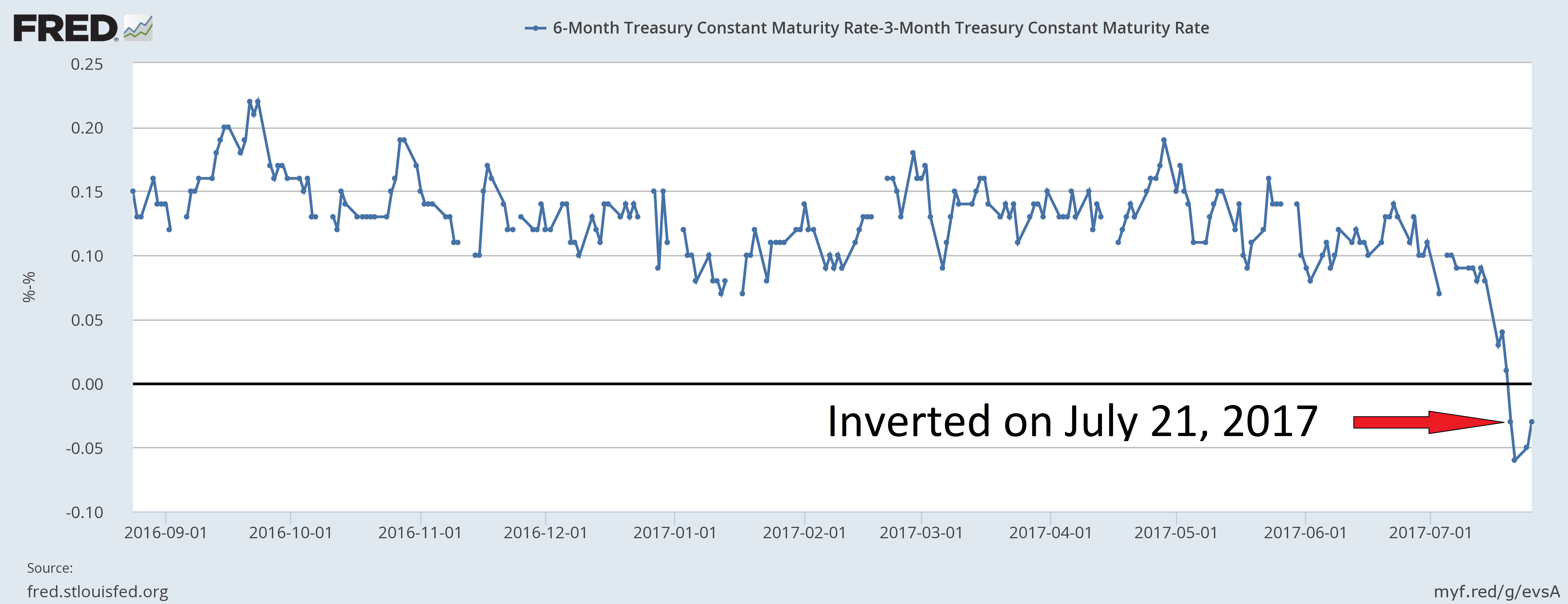For a Limited Time
Submitted by Atlas Indicators Investment Advisors on July 28th, 2017
America is quickly approaching its debt limit, and some market participants are concerned. Their worry stems from the possibility that our nation will be unable to pay debts that mature soon. According to projections from the Congressional Budget Office, the Treasury will run out of money in early to mid-October. For the first time since the financial crisis of 2008-2009, the short end of the yield curve is inverted.
The yield curve is a visual representation of bond interest rates across time. Generally speaking, the longer one must wait for a debt to mature, the higher interest a lender will be paid. This causes the yield curve to slope up and to the right from the bottom left corner of a graph. When shorter-term debt has a higher interest rate than those with longer maturities (called an inverted yield curve), something is usually thought to be amiss.
Starting on the 20th of July, the relationship between the three- and six-month Treasury Bills inverted. Essentially, those lending money to the U.S. government are more worried about being paid in October of this year than in January of 2018. As mentioned earlier, this is the first time since the Great Recession that an inversion has occurred, making it noteworthy.
In order for this to get remedied without America defaulting on its debt, Congress will need to vote to increase the nation’s borrowing limit. If they cannot agree on this matter, the government will be unable to pay its obligations fully which means previously authorized programs would go unfunded, investors would be stiffed for a period of time, or some combination of both. Historically, the debt ceiling has not been an issue, probably because politicians do not want to explain to constituents that favorite programs are being cut; it is for this reason alone that Atlas believes the probability of the ceiling being raised is high. The inversion will likely exist for a limited time.

